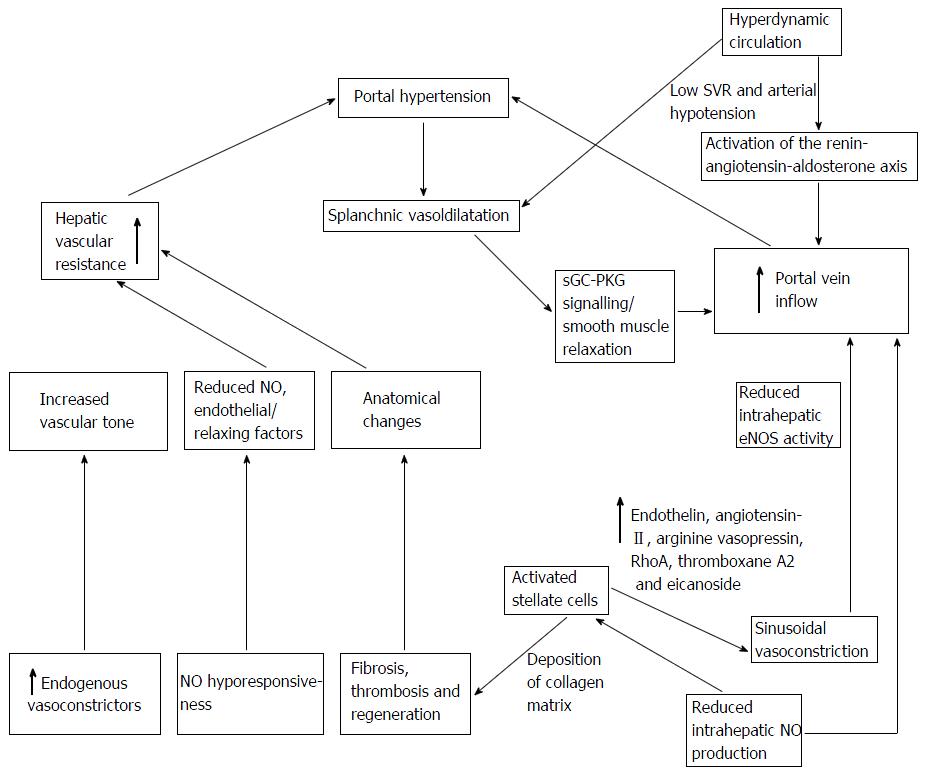Copyright
©The Author(s) 2016.
Figure 1 Factors involved in the pathogenesis of portal hypertension.
A mechanical obstruction due to fibrosis or regenerative nodules results increased resistance to flow and a rise in hepatic vascular resistance. Contraction of sinusoidal and extra sinusoidal contractile cells (stellate cells) with intrahepatic imbalance between vasoconstrictors (such as endothelin-1 and angiotensin) and vasodilators (e.g., NO) leads to reduced intrahepatic eNOS activity leading to an increase resistance to portal inflow. Portosystemic collaterals develop with the aim of decompressing the portal circulation. However, the opposite occurs, with splanchnic vasodilatation in response to a relatively ischaemic liver or extrahepatic excess of NO, with sGC-PKG signalling and smooth muscle cell relaxation. The increased portal blood flow maintains portal hypertension. A hyperdynamic circulation results due to these haemodynamic changes in cirrhosis and portal hypertension. eNOS: Endothelial nitric oxide synthase; NO: Nitric oxide; SVR: Systemic vascular resistance; sGC-PKG: Soluble guanylyl cyclase-cGMP-dependent protein kinase.
- Citation: Rajoriya N, Tripathi D. Non-selective beta-blockers in cirrhosis: Current concepts and controversies. World J Pharmacol 2016; 5(1): 15-31
- URL: https://www.wjgnet.com/2220-3192/full/v5/i1/15.htm
- DOI: https://dx.doi.org/10.5497/wjp.v5.i1.15









